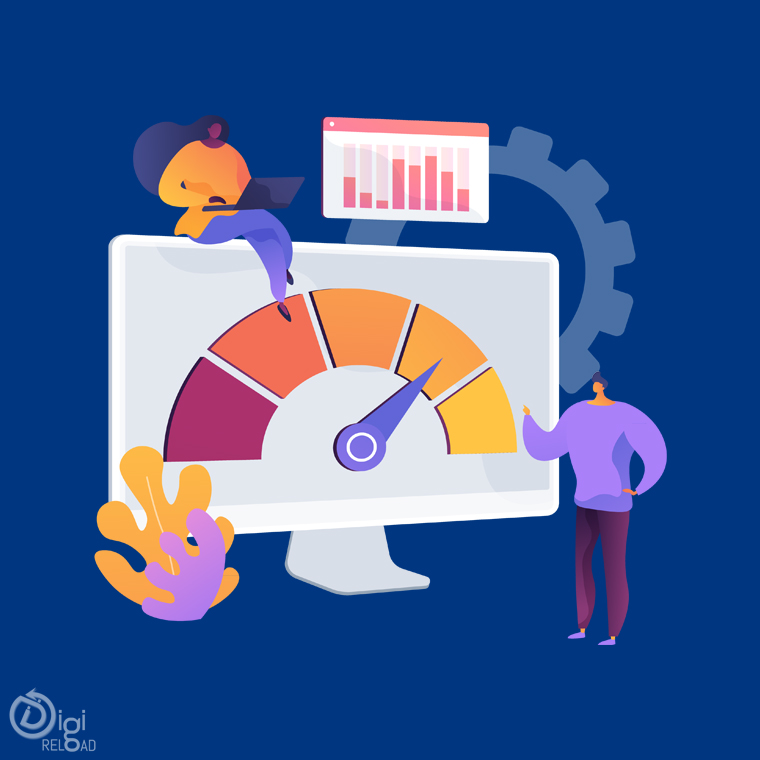What Is Intraday Trading?
The word "Intra" means "inside" or "within". With this definition if we now look at the term "Intraday" then it becomes self explanatory that it implies "trading of stock within a single day".
Let's understand it more clearly with this example -
Suppose you buy 100 stocks of DigiReload priced at INR 10 each, investing a total of INR 1000.
Now, during market hours if the stock price rises to INR 12, you sell those 100 stocks, now priced at INR 12 per stock earning INR 1200 and a profit of INR 200.
This is a classic Intraday "square-off". Now, you would want to know - What is square off in Intraday? The answer is, Square-off in Intraday is a position wherein you buy-sell or vice-versa, and thereby settle your stock trade in a single day.
Among the many types of stock trading available for dealing in stocks, Intraday is one of the medium to earn marginal profits daily. But "shortcuts need experts" and to make daily profits you must have deep knowledge of the market and mastery over different trading indicators plus insights on a stock's performance history. Otherwise, you will be trading your money to incur loss.
This information is incomplete without including and answering an important question related to Intraday trading - What happens if I don't square off Intraday? or What will happen if I forgot to sell my Intraday shares before market closing?
Well, there could be 2 scenarios:
(1) - Your broker will automatically square-off the trade for you before the market closes which means, it could either result in a profit or a loss, plus you will also have to pay the square-off charge.
(2) - Your Intraday trade will automatically convert into "Delivery" basis trade option, where you will be charged a nominal brokerage and will be allowed to sell stocks the next day or perhaps next week...whenever it profits you.
How To Do Intraday Trading?
After spending some time understanding about Intraday, it is now time to understand how to do Intraday trading? or what are the requirements to start Intraday trading? Well, besides market knowledge, passion for trading and of-course a lot of patience - here are following things you will need to start Intraday trading-
Trading account:
This is mandatory. Trading is an online operation and you need an online trading account to handle your transactions. Without a trading account you cannot gain entry in the world of trading. It must be linked to your bank account. Their could be a nominal fees for opening trading account which varies as per different broker houses.
Demat Account:
Demat is optional, however the brokers may try to convince you to open a Demat account, for all the right concerns though. Demat account let's you deal in long term stocks. If you are committed to Intraday trading, no need for a Demat but just in case if you miss your square-off time in a day trading, by any chance or for any reason, there wont be any way to hold your unsettled stocks, which could have been transferred to your Demat account, if you had owned one.
App:
Whichever broking firm you choose, you must have their dedicated app to be in constant touch with the market trends, to get regular updates on stock price fluctuations and to ease your overall trading experience.
KYC's:
The few documents that you should have at hand to open a Trading account and start trading are given as follows-
Aadhaar Card
PAN Card
Canceled Cheque
Cheque showing IFSC or MICR Code
Intraday Trading Strategies
Under this point we will discuss the strategies you must follow while doing Intraday trade. If you follow these Intraday trading strategies, you will be in a better position to make analytical decisions-
Use "Stop Loss" Feature:
This feature is a blessing as it doesn't let you fall. Think of this feature as a seat belt of a car, even if the car bumped against something, you are intact in your seat. As the term suggests - you have the liberty to mark a point which will be the minimum yield even if the stock price dives lowest. An example is, if you invested INR 90, there are 2 options, either the stock price will go up (100 or above) or come down (80 or below). What you can do is mark 80 as your "Stop Loss" and relax because even if the price went below 80...you will still get 80 before the market closes.
Choose Large-Cap Stocks:
The idea is simple, large-cap stocks are more liquid, they are among the regularly traded stocks in the market. The chances of you having to hold stocks for a longer duration is less in Large-cap stocks. Choose 2-3 large cap stocks for better combination.
Follow The Market Trends:
Look for market trends and follow the same while Intraday trading. Remember even experienced professionals with advanced tools sometimes fail to predict market movements. Do not experiment in the urge to earn more and put a leash on your emotion, to not let you put more money to cover up losses.
Use Trade Indicators:
Do research. Get knowledge on these indicators. Practice them a lot and understand the significance of their movements. If you become used to it, making analytical decisions would not be difficult for you and your day trade will mostly end with profit.















.png)